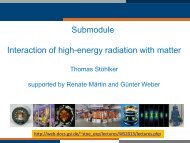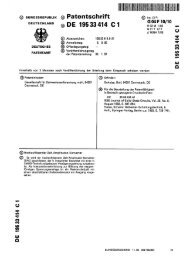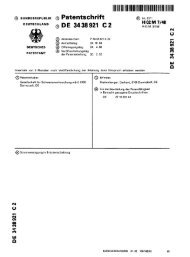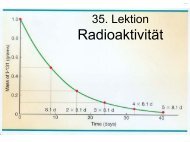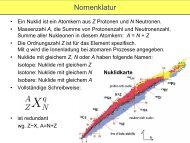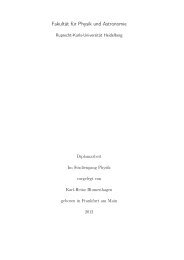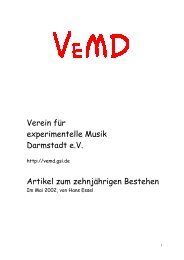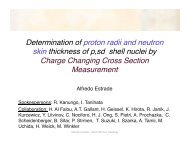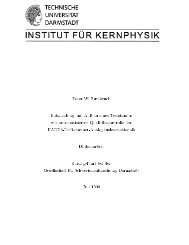doctoral thesis
doctoral thesis
doctoral thesis
Create successful ePaper yourself
Turn your PDF publications into a flip-book with our unique Google optimized e-Paper software.
34 CHAPTER 2. DETECTOR PHYSICS OF RPCS<br />
y<br />
cathode<br />
φ<br />
r<br />
x<br />
z=g<br />
z<br />
anode<br />
Figure 2.1: In our studies we will mainly use cylindrical coordinates z, r and φ, where<br />
the z-axis is perpendicular to the cathode and anode, that are situated at z = 0 and<br />
z = g.<br />
MAGBOLTZ [76], IMONTE [77] and HEED [25].<br />
We start with a discussion of primary ionization processes (section 2.1), followed<br />
by diffusion, drift and the multiplication of electrons under the influence of an electric<br />
field (section 2.2). In section 2.3 we investigate the electrostatics of a three layer geometry<br />
like an RPC. There we present the analytic formulas that can be used to calculate<br />
the electric field contributions of the space charge. The signal generation process and<br />
the weighting field formalism are the topic of section 2.4 and finally we shortly discuss<br />
the phenomenon of streamers in section 2.5. Based on the knowledge summarized in<br />
this chapter we shall present Monte-Carlo simulation models for avalanches in RPCs<br />
in chapter 3.<br />
2.1 Gas Ionization by Fast Charged Particles<br />
In the following sections we discuss the average distances between primary clusters,<br />
the effect on the detection efficiency of RPCs and the distribution of the number of<br />
released electrons per cluster.



